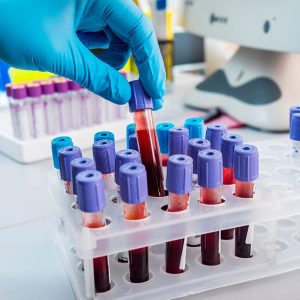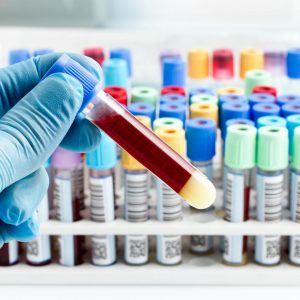Modern methods make it possible to detect Alzheimer’s disease (the most common case of dementia) only “after the fact”, when irreversible changes have already occurred in the brain and treatment practically does not work. However, the first molecular signs that signal the development of this disease at the protein level begin to appear long before its manifestation, often 20 years before. A new method developed at the Ruhr-Universität in Bochum, Germany, could help detect Alzheimer’s disease at a much earlier stage.
“The method should open up opportunities for therapy at an early stage, when many drugs may still be effective,” says Prof. Klaus Gerwerth from the Department of Biophysics at RUB.
In patients with Alzheimer’s disease, amyloid beta protein is not formed correctly due to pathological changes long before the onset of the first symptoms. A team of researchers led by Klaus Gerwerth successfully diagnosed this malformation using a simple blood test; as a result, the disease can be detected approximately eight years before the onset of the first clinical symptoms. However, the first version of this test was not suitable for clinical applications: it detected 71 percent of cases of Alzheimer’s disease in asymptomatic stages, but at the same time made false positive diagnoses in 9% of study participants. In order to increase the number of correctly identified Alzheimer’s cases and reduce the number of false positive diagnoses, researchers have spent a lot of time and effort optimizing the test.
As a result, the researchers presented a two-level diagnostic method. First, a blood test is used to identify people at high risk.
Next, the scientists add a dementia-specific biomarker, namely tau, to conduct further tests with those test participants who tested positive for Alzheimer’s disease in the first stage. If the second biomarker also shows a positive result, the likelihood of developing Alzheimer’s disease increases significantly. “Thanks to the use of the two-level method, 87 out of 100 patients in our study were correctly diagnosed with Alzheimer’s disease,” concludes Klaus Gerwerth. “And we have reduced the number of false positive diagnoses in healthy people to 3 out of 100. Cerebrospinal fluid is used for the second test.”
“Now it is possible to conduct new clinical studies with participants in this experiment at the earliest stages of the disease,” says Gervert. He hopes that existing therapeutics, which have so far been ineffective, can work. “Recently, two large promising studies have failed, Crenezumab and Aducanumab, not least because it was probably too late by the time therapy was started. However, our results are encouraging.”
The team is working in parallel to improve the technique for conducting such an analysis. While the first step is fully automatic, tau analysis requires a puncture of the cerebrospinal fluid https://en.wikipedia.org/wiki/Cerebrospinal_fluid. Scientists, however, are confident that soon the tau protein can be identified in a normal blood sample.
